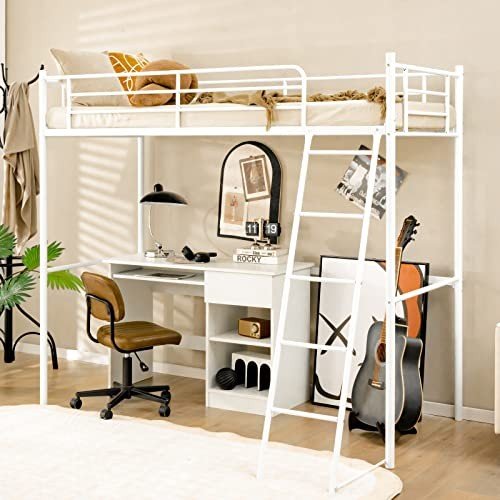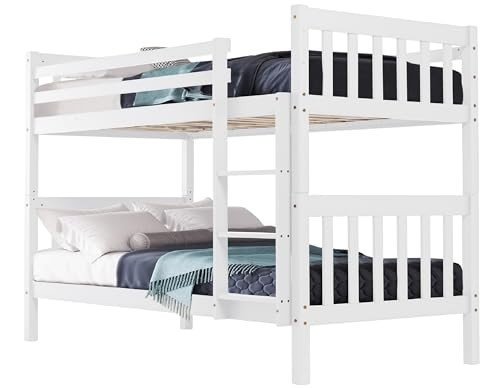The Ultimate Guide to Kids Bunk Beds: Maximizing Space and Fun
With the rise of vertical living and smaller sized areas, the appeal of bunk beds has actually soared amongst families. Bunk beds not just provide a useful sleeping option, especially in shared rooms, but they likewise bring an element of fun into a kid's life. This detailed guide explores the functions, benefits, and considerations of kids' bunk beds, making it easier for parents to pick the right bed for their youngsters.
Functions of Kids Bunk Beds
bunk Beds children's beds are versatile furniture pieces that serve more than a single purpose. Here are some essential functions to think about:
| Feature | Description |
|---|---|
| Product | Bunk beds can be constructed from wood, metal, or a mix of both, providing varying levels of toughness and style choices. |
| Safety Features | Many bunk beds come equipped with guardrails, safe and secure ladders, and capped supports for safety, particularly important for young children. |
| Design Variety | Choices vary from timeless styles to contemporary styles, making sure a match for any space decoration. |
| Space-Efficiency | Bunk beds utilize vertical space, making them ideal for smaller sized spaces. |
| Convertible Options | Some designs can be transformed into 2 separate beds, providing flexibility as kids Bunk beds grow. |
| Storage Solutions | Some bunk beds come with integrated storage drawers or shelves, assisting to keep the room arranged. |
Benefits of Kids Bunk Beds
Purchasing a bunk bed sale bed comes with numerous advantages:
- Space Saving: Bunk beds take full advantage of floor space, permitting more backyard or storage services.
- Fun Factor: With a bunk bed, kids belong that cultivates imagination and companionship throughout slumber parties or playdates.
- Economical: Instead of acquiring two separate beds, a bunk bed can accommodate two children at the same time, saving money in the long run.
- Flexibility: Many bunk beds can be taken apart or converted into twin beds, making them a long-lasting financial investment as children's needs alter.
- Social Interaction: Bunk beds encourage family bonding and relationships, offering an inviting space for kids to share stories and laughter.
Factors to consider When Choosing a Kids Bunk Bed
When selecting the best bunk bed for a child, moms and dads should consider numerous aspects:
- Safety Standards: Ensure that the bunk bed complies with security regulations and features essential security functions.
- Age Appropriateness: Different designs cater to various age groups. For example, conventional bunk beds may not appropriate for more youthful kids.
- Room Dimensions: Measure the bedroom to guarantee the cheap childrens bunk beds bed fits appropriately, permitting for space to move around easily.
- Weight Capacity: Consider the weight load of each bed and guarantee it accommodates the child's weight easily.
- Design Preferences: Letting kids get involved in the selection process can assist them feel more excited about their brand-new bed.
Types of Kids Bunk Beds
Bunk beds are available in different styles and setups to suit various needs:
| Type | Description |
|---|---|
| Standard Bunk Bed | A classic style with one bed stacked on top of another, normally utilizing a ladder to access the leading bunk. |
| L-Shaped Bunk Bed | Functions two bunk beds connected in an L-shape, often more large and ideal for kids sharing a room however needing a bit more space. |
| Triple Bunk Bed | Makes up three stacked beds, ideal for optimizing sleeping plans in extremely minimal spaces. |
| Loft Bed | A raised bed with space below that can act as a backyard, research study corner, or additional storage. |
| Futon Bunk Bed | Integrates a bunk bed on the top with a futon or sofa underneath, making it great for pajama parties and taking full advantage of space use. |
| Convertible bunk bed sale Bed | Can be separated into two individual beds, offering versatility as children's needs alter. |
Taking Care Of Kids Bunk Beds
Maintaining bunk beds is vital for guaranteeing durability and security. Here are some easy care practices:
- Regular Inspections: Check the bed frequently for loose screws and tightened up bolts to make sure stability.
- Tidiness: Keep bed linen clean and fresh, rotating mattresses for even wear.
- Guardrails: Ensure guardrails are secure and in location, specifically if children tend to move around a lot in their sleep.
- Air Circulation: Ensure the bed has enough airflow, preventing moisture buildup that can result in mold or mildew.
Frequently Asked Questions About Kids Bunk Beds
Q1: At what age can a child securely use a bunk bed?
A1: Generally, kids aged 6 and older are considered safe to utilize the upper bunk due to the height and stability elements included.
Q2: Can I place a bunk bed near a window?
A2: It is advisable to prevent putting a bunk bed near windows to lower the threat of falling or injuries.
Q3: Are bunk beds safe for more youthful kids?
A3: While some modern bunk beds come with safety features accommodating more youthful children, it is generally recommended to wait until they are older, usually over 6 years.
Q4: What is the common weight limit for top bunks?
A4: Weight limits differ by design but usually range from 150 to 250 pounds. Always describe the producer's requirements.
Q5: How often should I inspect the bunk bed's security features?

A5: It is recommended to carry out a safety check every few months or whenever you notice any signs of wear.
Kids' bunk beds act as a strategic option for families seeking to make the most of space while offering an enjoyable and interesting sleeping environment for their kids. With a range of alternatives offered-- from standard designs to loft beds-- parents have the liberty to select something that satisfies their household's particular requirements. By thinking about vital factors such as security, space suitability, and their children's choices, parents can make an educated option, guaranteeing that each child is thrilled about bedtime while gaining from a well-organized space.









